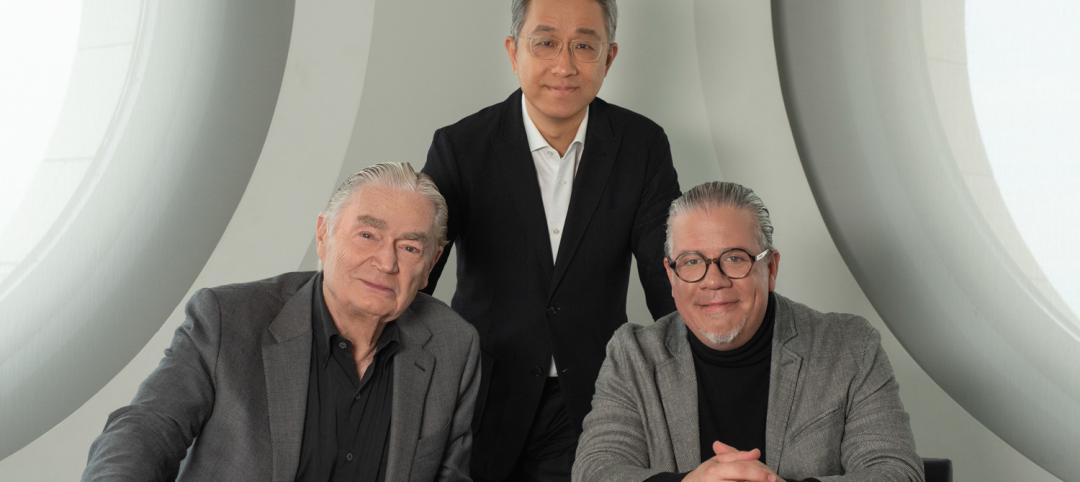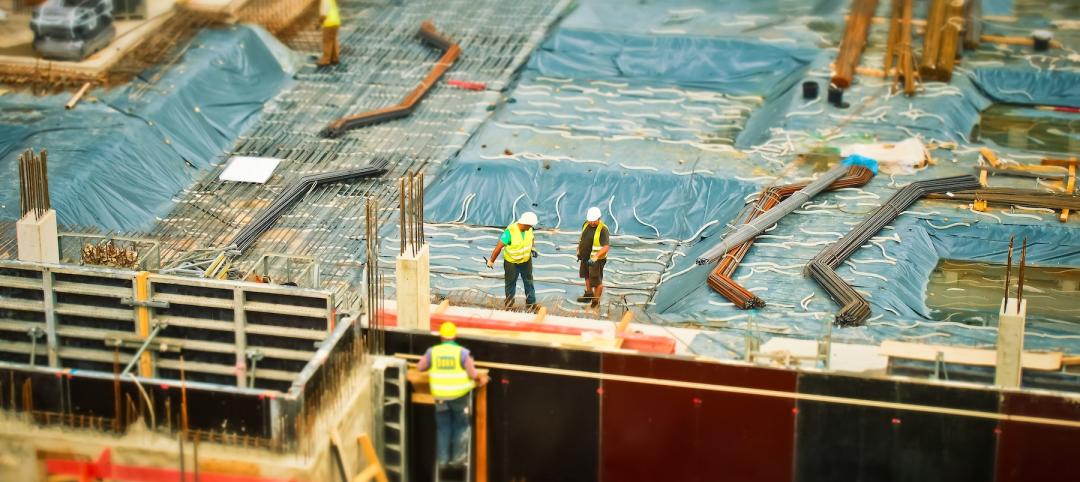The International Code Council (ICC), the American Society of Heating, Refrigerating and Air Conditioning Engineers (ASHRAE), the U.S. Green Building Council (USGBC), and the Illuminating Engineering Society of North America (IES) today announce the launch of the International Green Construction Code (IGCC), representing the merger of two national efforts to develop adoptable and enforceable green building codes. The IGCC provides the building industry with language that both broadens and strengthens building codes in a way that will accelerate the construction of high-performance, green buildings across the United States.
For decades, ICC and ASHRAE have worked to develop codes and standards that become the industry standard of care for the design, construction, operations and maintenance of residential and commercial buildings in the United States and internationally. In coordination with the efforts of ICC and ASHRAE, USGBC has been leading a nationwide green building movement centered on the LEED Green Building Rating System since LEED was launched in 2000. The convergence of these efforts in the IGCC is perhaps the most significant development in the buildings industry in the past 10 years.
Leveraging ICC's unrivaled delivery infrastructure to reach all 50 states and more than 22,000 local jurisdictions and ASHRAE, USGBC and IES's technical strengths, this partnership will accelerate the proliferation of green building codes and standards developed jointly by ICC, ASHRAE and USGBC and IES, across the country and around the globe. The newly launched IGCC establishes a previously unimaginable regulatory framework for the construction of high-performance, commercial buildings that are safe, sustainable and by the book.
A landmark addition to the technical content of the IGCC is the inclusion of ANSI/ASHRAE/USGBC/IES Standard 189.1, Standard for the Design of High Performance, Green Buildings Except Low-Rise Residential Buildings, as an alternate path of compliance. Standard 189.1 is a set of technically rigorous requirements, which like the IGCC, covers criteria including water use efficiency, indoor environmental quality, energy efficiency, materials and resource use, and the building's impact on its site and its community. Standard 189.1 was written by experts representing all areas of the building industry, who contributed tens of thousands of man hours. Developed in a little over three years, the standard underwent four public reviews in which some 2,500 comments were received.
"The emergence of green building codes and standards is an important next step for the green building movement, establishing a much-needed set of baseline regulations for green buildings that is adoptable, usable and enforceable by jurisdictions," said ICC Chief Executive Officer Richard P. Weiland. "The IGCC provides a vehicle for jurisdictions to regulate green for the design and performance of new and renovated buildings in a manner that is integrated with existing codes as an overlay, allowing all new buildings to reap the rewards of improved design and construction practices."
"Bringing together the code expertise of ICC with technical expertise of ASHRAE to create a comprehensive green building code will accelerate our transformation to more sustainable building practices," Gordon Holness, ASHRAE president, said. "ASHRAE is committed to providing the design guidance building designers and engineers need to reduce the energy consumption of buildings."
"The U.S. Green Building Council's mission is market transformation and we've long recognized the need to reach beyond the market leaders served by LEED to accomplish this goal," said Rick Fedrizzi, President, CEO and Founding Chairman of the U.S. Green Building Council. "Broadening the scope of the codes and establishing a higher floor allows us to continue to raise the ceiling, a critical factor in how the building industry is working to mitigate climate change. We are thrilled to see this set of complementary green building codes and standards; our organizations working collaboratively will advance green building nationwide in a way that was never before possible. "
"IES is pleased to support the collaborative efforts of the organizations which demonstrate expertise in code and technical standards development in this comprehensive green building code," said Rita Harrold, IES Director of Technology. "IES looks forward to ongoing guidance for sustainable building practices."
On Monday, March 15, ASHRAE, IES and USGBC will join ICC at its Washington, D.C., headquarters as they and their co-authors (the American Institute of Architects and the American Society for Testing Materials) launch the IGCC. On Monday, Standard 189 .1 and the IGCC will be available for wide distribution, providing much-needed content, code language, and vision for more safe and sustainable future. The organizations are also working together to advance related education and advocacy efforts to promote adoption, enforcement and compliance with the IGCC codes that will pave the way for green buildings and neighborhoods, while creating jobs and strengthening the economy.
For more information on IGCC: http://www.iccsafe.org/cs/IGCC/Pages/default.aspx and on Standard 189.1: www.ashrae.org/greenstandard.
Related Stories
| Aug 17, 2022
New York to deploy 30,000 window-sized electric heat pumps in city-owned apartments
New York officials recently announced the state and the city will invest $70 million to roll out 30,000 window-sized electric heat pumps in city-owned apartments.
| Aug 17, 2022
IBM’s former office buildings in Boca Raton turn into a modern tech campus
Built in 1968, the Boca Raton Innovation Campus (BRiC), at 1.7 million square feet, is the largest office campus in Florida.
| Aug 16, 2022
DOE funds 18 projects developing tech to enable buildings to store carbon
The Department of Energy announced $39 million in awards for 18 projects that are developing technologies to transform buildings into net carbon storage structures.
| Aug 16, 2022
Multifamily holds strong – for now
All leading indicators show that the multifamily sector is shrugging off rising interest rates, inflationary pressures and other economic challenges, and will continue to be a torrid market for design and construction firms for at least the rest of 2022.
| Aug 16, 2022
Cedars-Sinai Urgent Care Clinic’s high design for urgent care
The new Cedars-Sinai Los Feliz Urgent Care Clinic in Los Angeles plays against type, offering a stylized design to what are typically mundane, utilitarian buildings.
| Aug 15, 2022
IF you build it, will they come? The problem of staff respite in healthcare facilities
Architects and designers have long argued for the value of respite spaces in healthcare facilities.
| Aug 15, 2022
Boston high-rise will be largest Passive House office building in the world
Winthrop Center, a new 691-foot tall, mixed-use tower in Boston was recently honored with the Passive House Trailblazer award.
Architects | Aug 12, 2022
Goettsch Partners names James Zheng, CEO, and Paul de Santis, Co-design Director
Global architecture firm Goettsch Partners (GP) announces that James Zheng, AIA, LEED AP, has been named CEO, and Paul De Santis, Assoc. AIA, LEED AP, joins James Goettsch, FAIA, as co-design directors for the practice. As the primary partners in the firm, the three have worked closely together for more than 17 years. Goettsch will also continue to serve as chairman while Zheng now assumes the full CEO title as well as president.
| Aug 12, 2022
Monthly Construction Input Prices Decreased 2% in July, Up 17% From a Year Ago, Says ABC
Construction input prices decreased 1.8% in July compared to the previous month, according to an Associated Builders and Contractors analysis of U.S. Bureau of Labor Statistics’ Producer Price Index data released today.
Hotel Facilities | Aug 12, 2022
Denver builds the nation’s first carbon-positive hotel
Touted as the nation’s first carbon-positive hotel, Populus recently broke ground in downtown Denver.
















